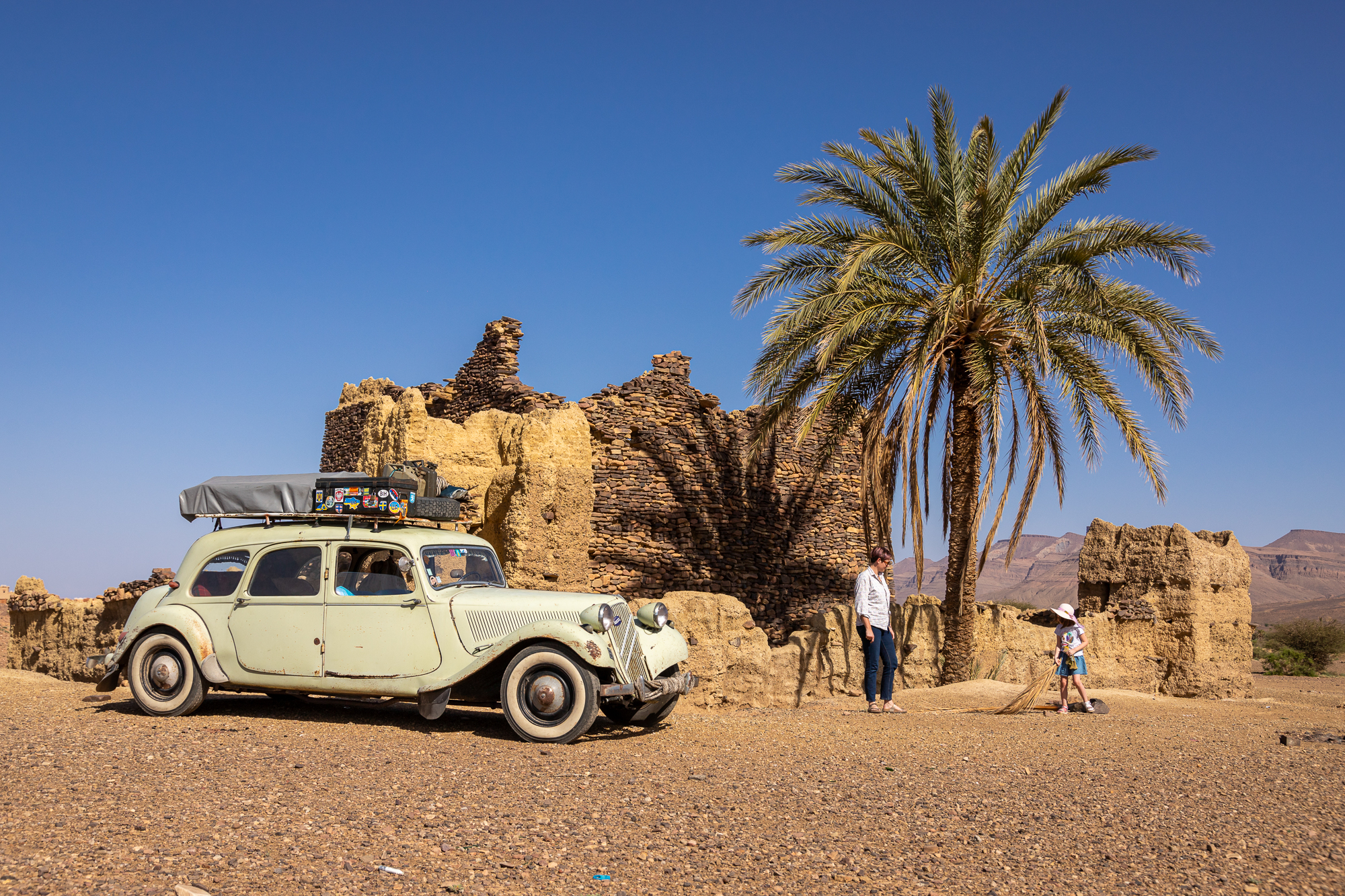Photography by Etienne Musslin
When we decide to leave on a trip—whether it’s 200 kilometers, around the globe, or somewhere in between—vehicle choice is often something we dive into headfirst. Maybe your trusty steed is parked in your driveway, or perhaps you’ve spent countless hours (and dollars) building a one-of-a-kind contraption with all the amenities. Whatever it may be, obsessions with reliability, off-pavement capability, and parts availability drive us to forums and blogs. We become practical and fixated on minimizing electronic components or, on the flip side, are swayed by newer options reputedly less likely to fail. These are considerations we shouldn’t take lightly. It is in our interest to do so for safety reasons, to stay within budget, and to attempt, as best we can, to understand what we’re in for when we leave the driveway.
But what if, among the bean counting and striving for the “right” choice, we considered passion? What if we dreamt of how our vehicle would affect who we met and how, our travel style, and the way we made decisions on the road? Driving a new Land Cruiser elicits a decidedly different experience than a classic Volkswagen Bug or a Land Rover. What if we chose a vehicle based on love and familiarity—practical or not—and merely observed how our days are shaped because of it?
For French photographer and Citroën restorer Etienne Musslin, embarking on a road trip to Morocco in a 1955 Citroën Traction Avant 11CV completely changed how he and his family traveled. Etienne and his wife, Agathe, wanted to go to Morocco with their daughter, Anouk, in a simple way that reflected the age of the car. No air-conditioning, power steering, or high-tech electronics influenced the driving experience. Musslin’s 40th birthday was just around the corner, and he wanted to do something that would make him feel alive. He wanted to drive the Citroën 11CV to Morocco and photograph the car in the desert—or even better—in the dunes.
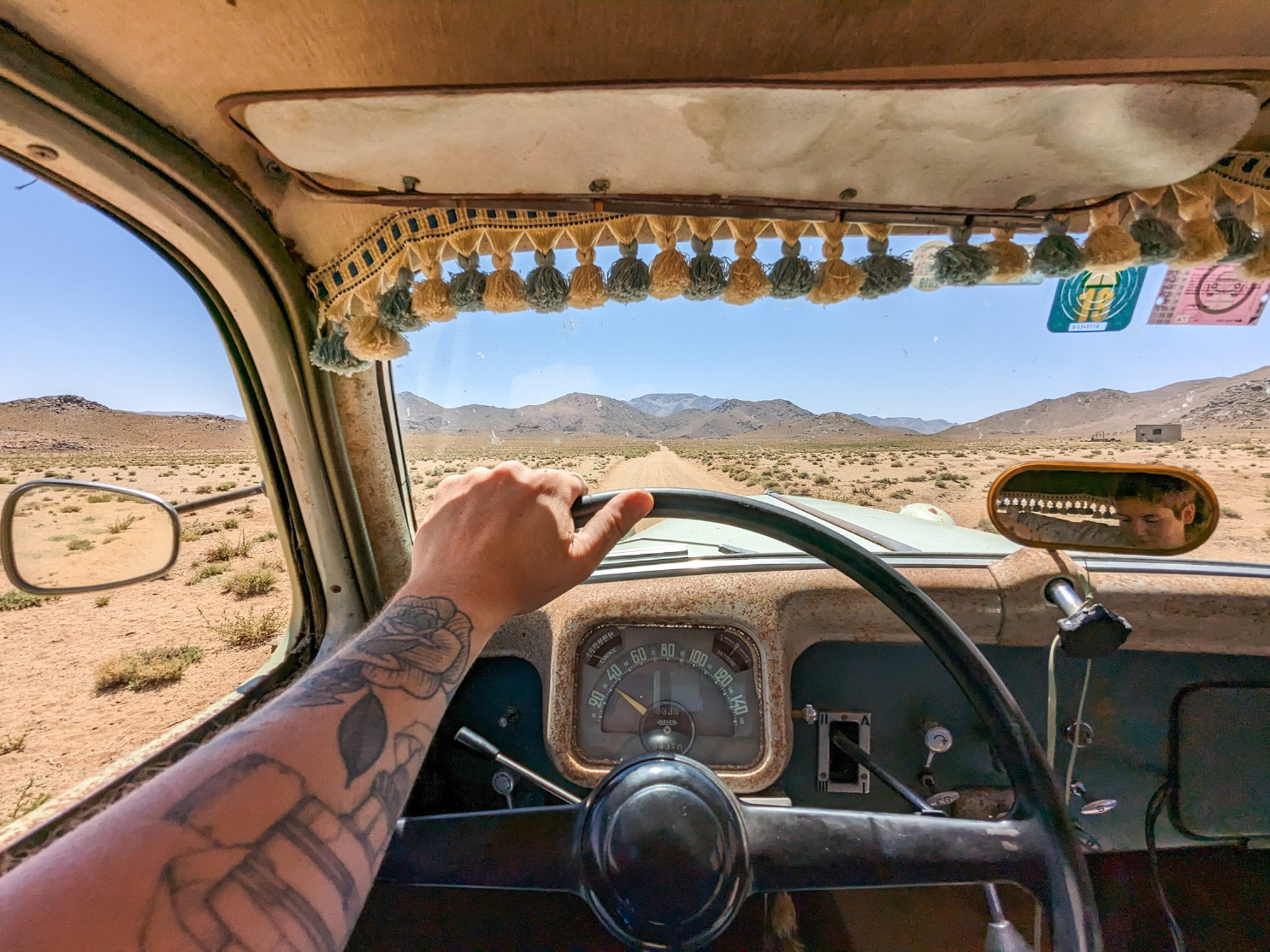
Musslin remembers asking his mom to buy a 2CV when he was a kid in the 1980s. The main reason: it looked fun. A photo of his parents from a decade earlier showed them traveling in one as students—not necessarily for fun, but because before the last Citroën 2CV rolled off the line in France in 1988, it was the cheapest car you could buy. Fascinated by this funny-looking vehicle that seemed out of place on the streets of Alsace, Etienne finally bought his own at age 17, leaving for Norway, Finland, and Sweden as soon as he got his driver’s license. From there, he began writing and taking photographs, eventually publishing a magazine called Planète 2CV. Today, Etienne owns Garage 2CV, a specialist shop that buys, sells, ships, and stores Citroëns. On the mechanical and repair side, the goal is to keep the cars as close to their original condition as possible. Shiny pink paint jobs are referred elsewhere. For Etienne, authenticity is the driving factor.
Face-to-face, Musslin radiates an infectious, bright-eyed passion for CVs. Sporting a tweed cap and a collage of tattoos, he enthusiastically walked me through the past life of his 1955 Citroën Traction Avant 11CV. His French accent made the backstory especially delightful. The car was sold new in 1955, he says, to a farmer on the west side of France. Other than a yellowish-green paint job, the details are fuzzy until 1970, when a young Frenchman purchased the car to use as a cheap nightclub runner to transport friends. In 1975, the Frenchman packed it away in a barn, where it sat for the next 40 years. “I still have pictures of when it came out of the barn,” Etienne says. “A collector from the Netherlands took it out and started working on it. He gave the engine and gearbox to a garage, and they were rebuilt as original.” An issue with payment arose, so the garage bought the car, eventually selling it to Musslin’s good friend, who set off on a European tour with it. “When he visited me with this car, I always told him, ‘I love this car. I love it. The day when you want to sell it, tell me.’”
A broken driveshaft in Bosnia led to a trailer ride back to France, where the Citroën sat for another nine months before Etienne finally had the chance to buy it. Driving to Sarajevo with his wife and daughter in 2019, he finished the trip that his friend started. “I didn’t know it much,” he says. “It was quite an experience because I really learned about that car. It’s 5 meters long—very convenient for inside space. My wife loved it too.” By 2022, the couple had been talking about going to Morocco for a while. “I said, for my birthday, I want to go to Morocco in this car. So, we bought a [ferry] ticket, and we did it.”
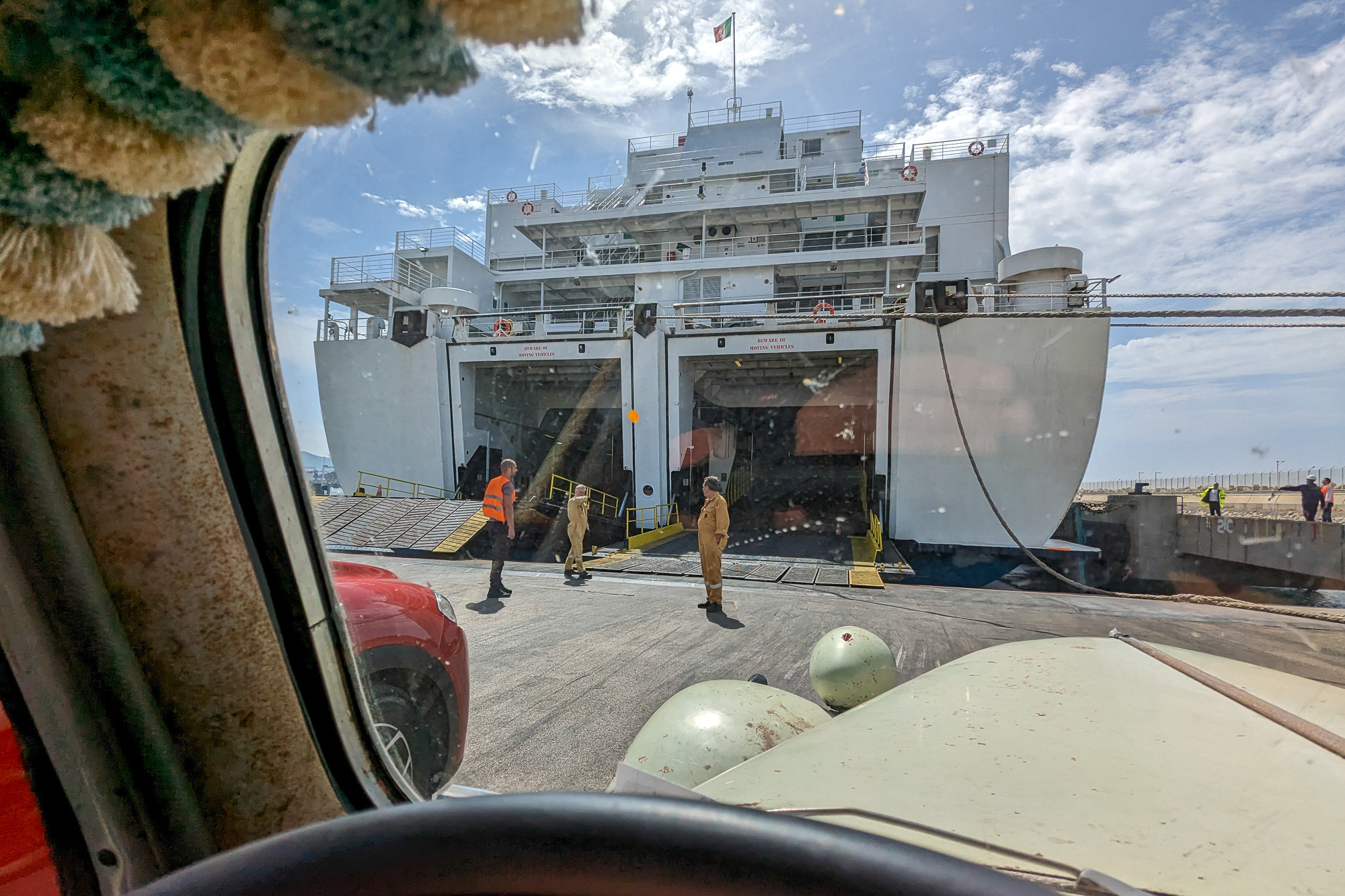

Arriving in Morocco, they quickly noticed that there were many things to do and see. With four weeks total, there wasn’t time to experience it all, so they prioritized the goal of the trip: the dunes. On the way to Mhamid, marking the edge of the Sahara, Etienne, Agathe, and Anouk bivouacked in the Atlas Mountains, where a group of macaques fought amongst pine and cedar trees. Descending towards Tinghir, their surroundings transformed from green to gold as they entered the desert. However, upon arriving in Zagora, Musslin knew that although a trek into the Sahara with the Citroën wasn’t impossible, it was complicated, extremely hot, and possibly too dangerous to go alone.
The Traction Avant was the first unibody front-wheel-drive car, meaning the transmission and front axle act as one unit and are bolted to the body of the vehicle. Etienne’s model still has the original engine and the incredibly complicated 3-speed gearbox. “I was scared to break the gearbox because it’s the weak point of the car,” he tells me. “It would have meant the end of the trip.” The Citroen also required a generous collection of specific tools; for example, certain tools remove the front drums, while others dismantle the front axle. If you break a transmission, not only does the front axle have to be taken apart, but so do the four-wheel bearings, which, you guessed it, also require specialized tools for removal.
Temperature control is minimal to none, as there is no cooling, heating, or ventilation, although some air circulation is managed by 4-60 air-conditioning and the ability to open the windshield. With no coolant overflow tank, electric fan, or temperature gauge, Etienne would leave the car running and open the bonnet after a long climb to keep water running so as not to lose a head gasket. Daily temperatures in the dunes crept to over 45°C. They didn’t want to do anything extreme. Perhaps the edge of the Sahara was enough.

In Zagora, the family met two Germans driving Land Cruisers. “They asked me if I wanted to go to the desert, and I said, of course I wanted to,” Musslin says. The Germans offered to go together, and if the Citroën got stuck in the sand, they would help pull it out. Etienne was elated. “The next day, we went deep, deep off-roading, and it was a dream come true.” He stopped to photograph the car and fill the radiator with water due to scorching air temperatures while Agathe and Anouk hopped in the Land Cruiser, where the air-conditioning soothed their overheating bodies. “After that, we did hit the dunes,” Etienne says. “At some point, I got stuck, of course, so we pulled [the car] out.”
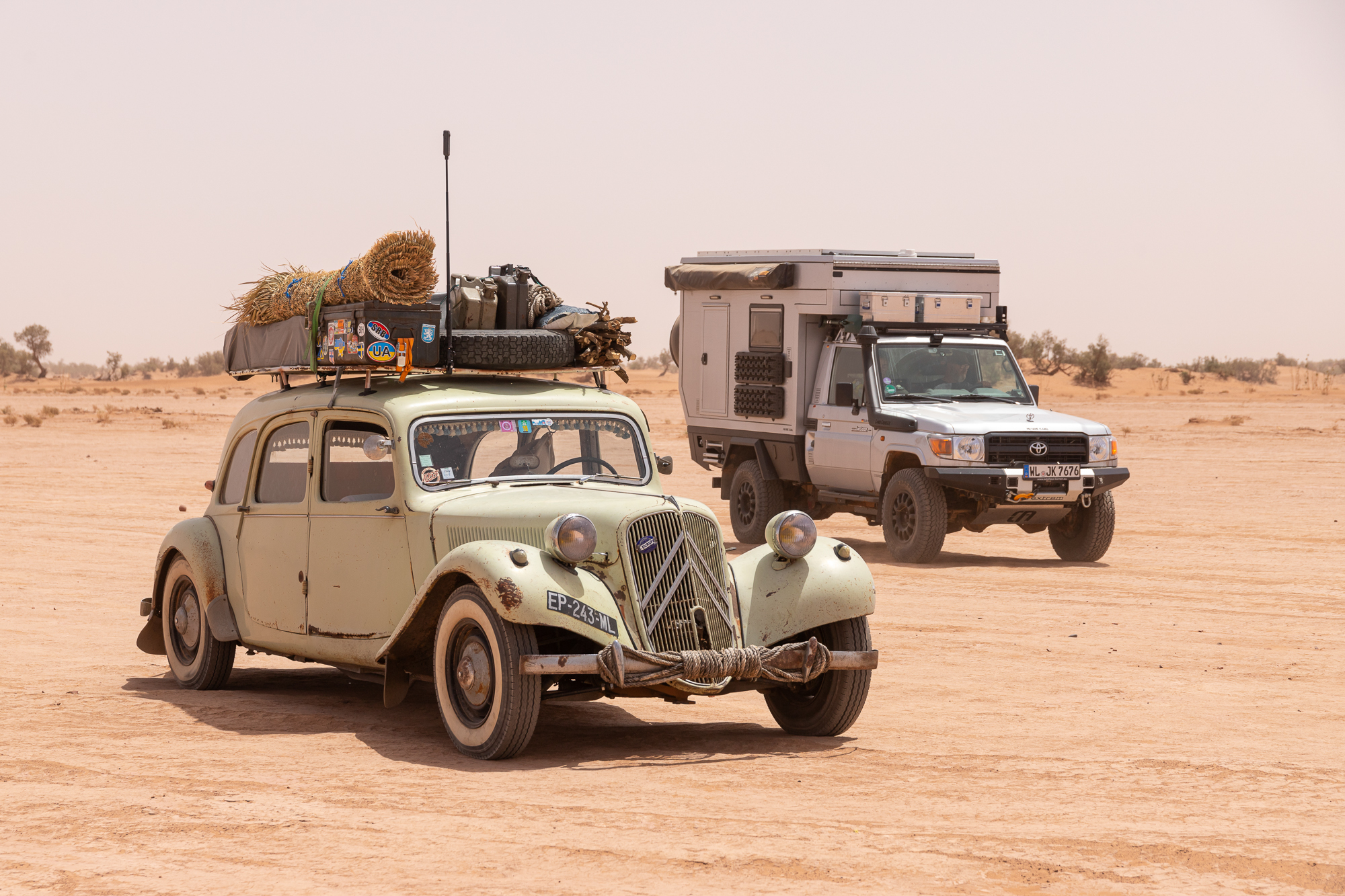
The 1955 Citroën Traction Avant 11CV doesn’t have rear or front hooks, so the cars can be tricky to tow as they don’t have a standard chassis. Musslin remedied this conundrum by purchasing a reinforcement for the front axle from a specialist garage. He also added a trailer tow hook to the rear. At times, the convoy encountered soft, enveloping sand. Hooking the car to one of the Land Cruisers, they were able to drive it through—gently. The idea was to go home with the car. Eventually, their time in the Sahara ended, and, with plenty of photographs, the family turned toward the cooler Atlantic for a breath of fresh, coastal air.
Driving a distinctive vehicle is often part of the fun of overland travel. Your license plate, accessories, or highly coveted and unavailable model acts as a conversation starter wherever you may go. Etienne says the Traction Avant attracts those connected with its history (it was their father or grandfather’s car, too) but also draws in non-car people. “Lots of women come to chat with us,” he says, adding that even if people have no idea what the car is, they are curious enough to talk about it. “One Spanish woman said it looked like it was from an Indiana Jones movie. It just interests people.” Often, after pulling into a campground, Etienne, Agathe, and Anouk didn’t have enough time to park the car, open the tent, and start cooking before people showed up to chat and check out the car. “Sometimes, I’m like, oh, come back in one hour,” Musslin laughs. “But we know how it works. Many people are very, very friendly.”
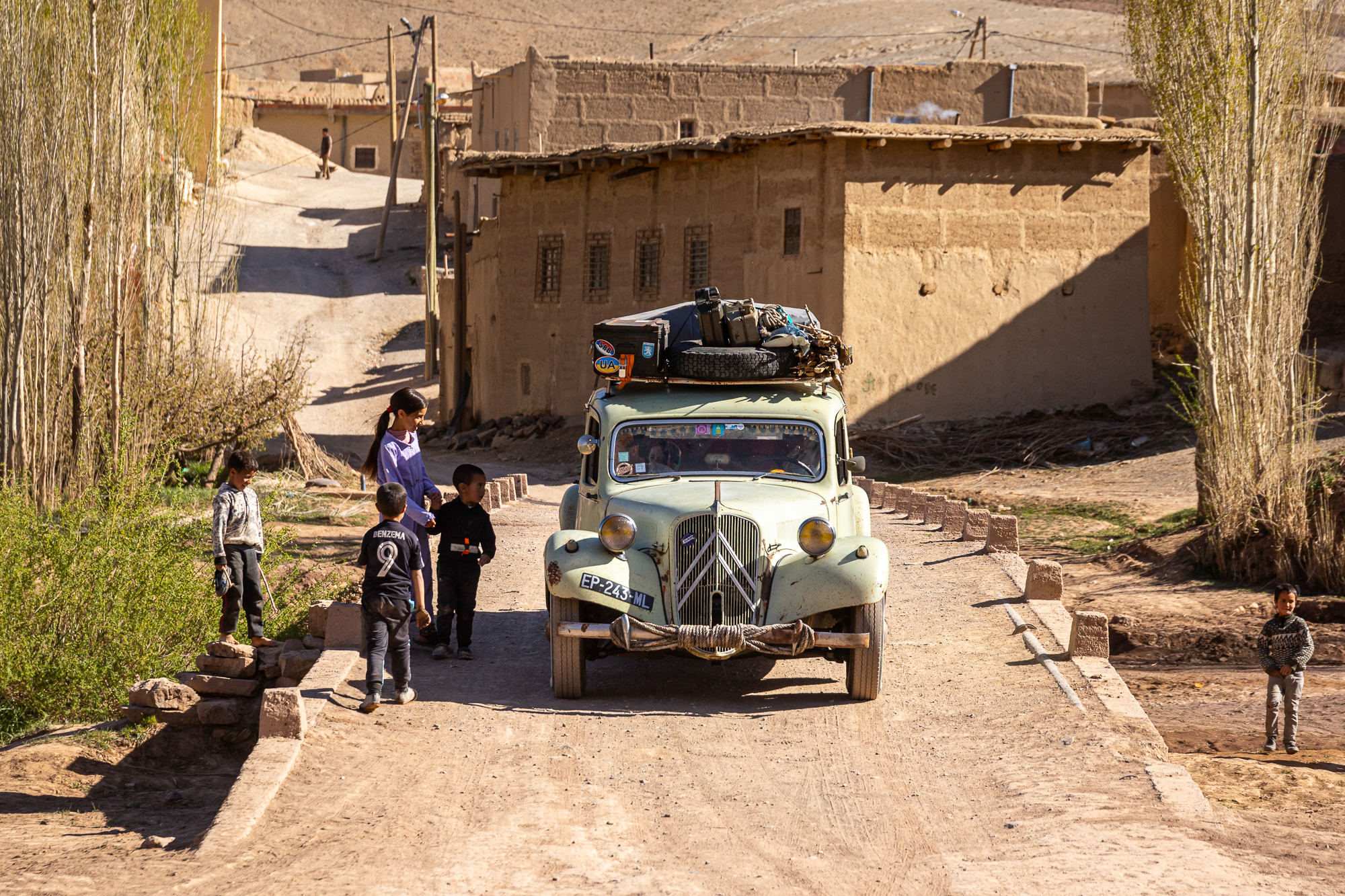
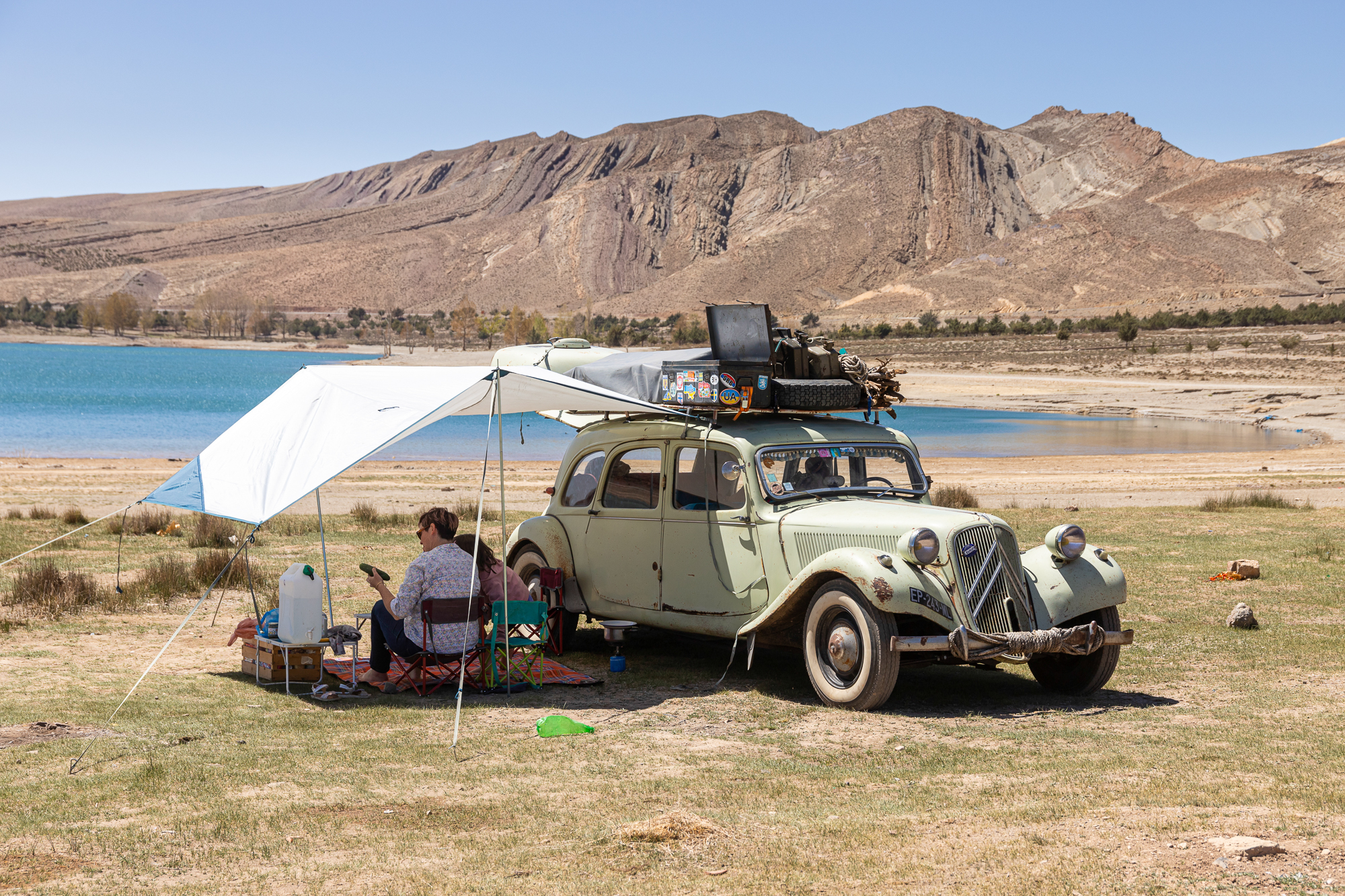
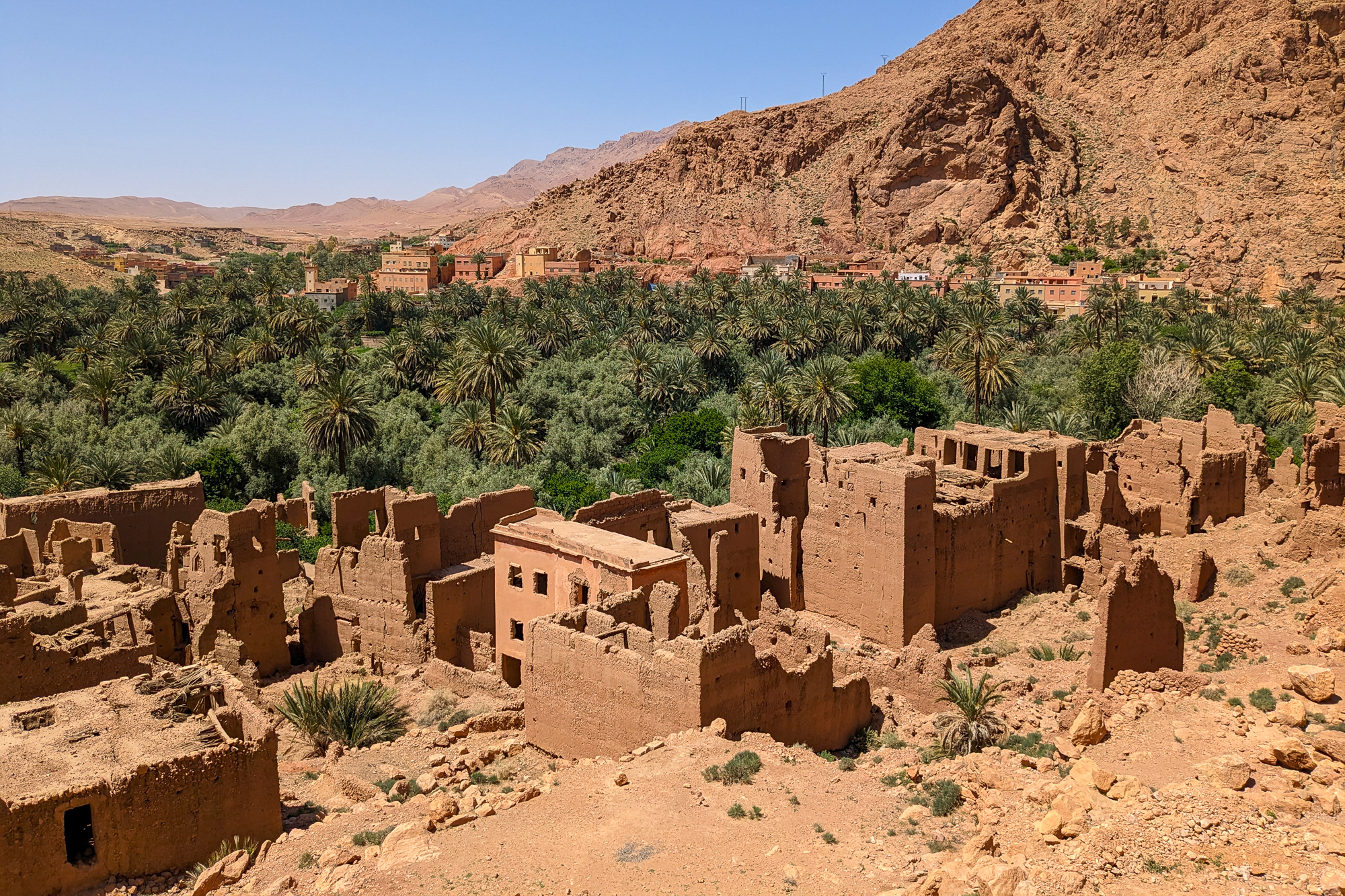
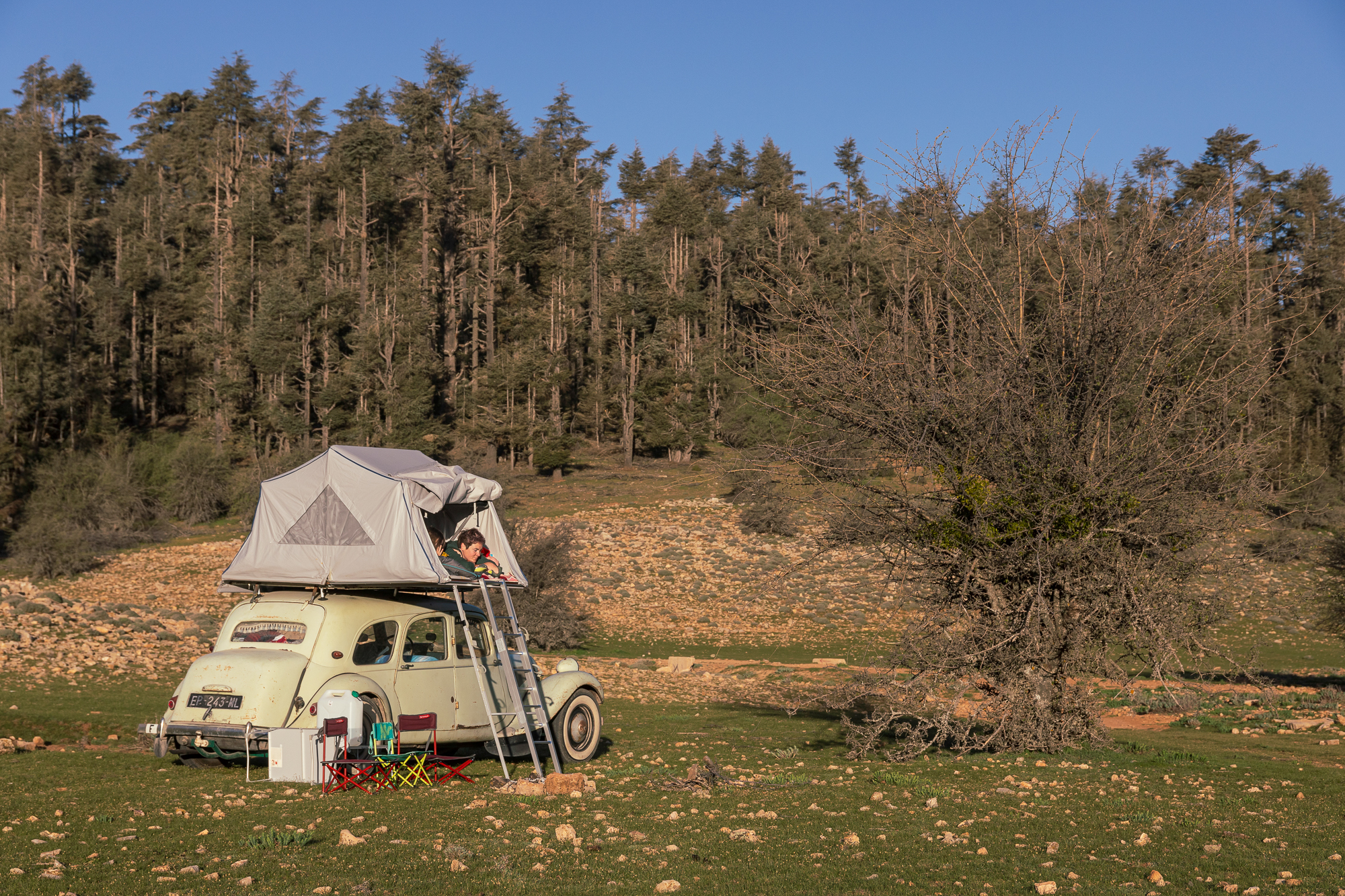
The Citroën is equipped with a custom roof rack built by Etienne, a rooftop tent, and a canvas awning; however, the lack of a fridge or ice box changed the trajectory of their trip, arguably for the better. Without temperature-regulated food storage, the family stopped in villages daily, searching for little shops filled with provisions. This took them both to heavily touristed areas and places where the local people were surprised to see them. Because they were visiting the country during Ramadan, he, Agathe, and Anouk would stop for a picnic outside the cities to be alone and respect the local custom of fasting during the day. Sometimes Moroccans would stop by to look at the car and chat, and it was always a pleasant experience, Etienne says. “They always wished us an enjoyable meal.”
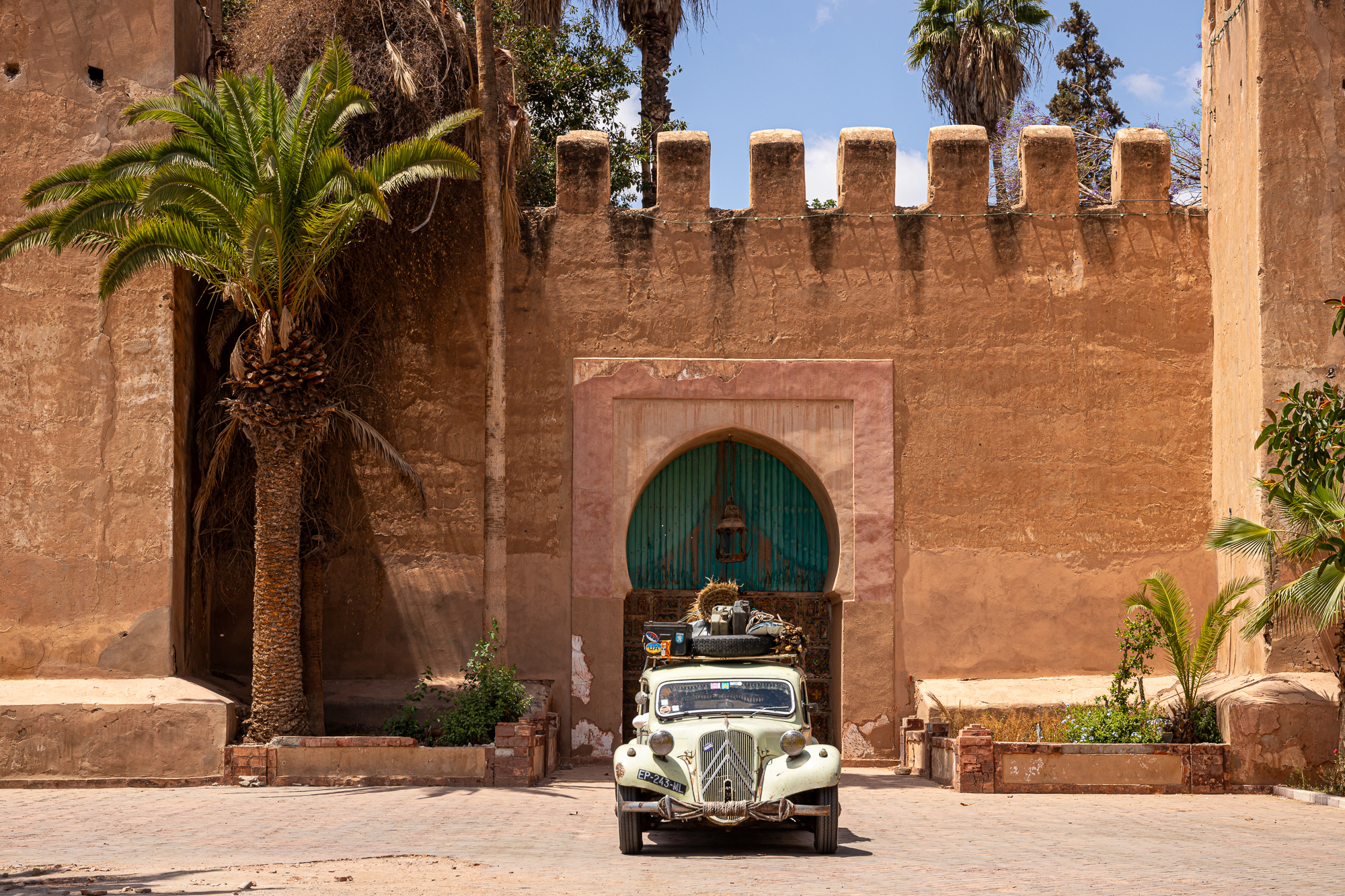
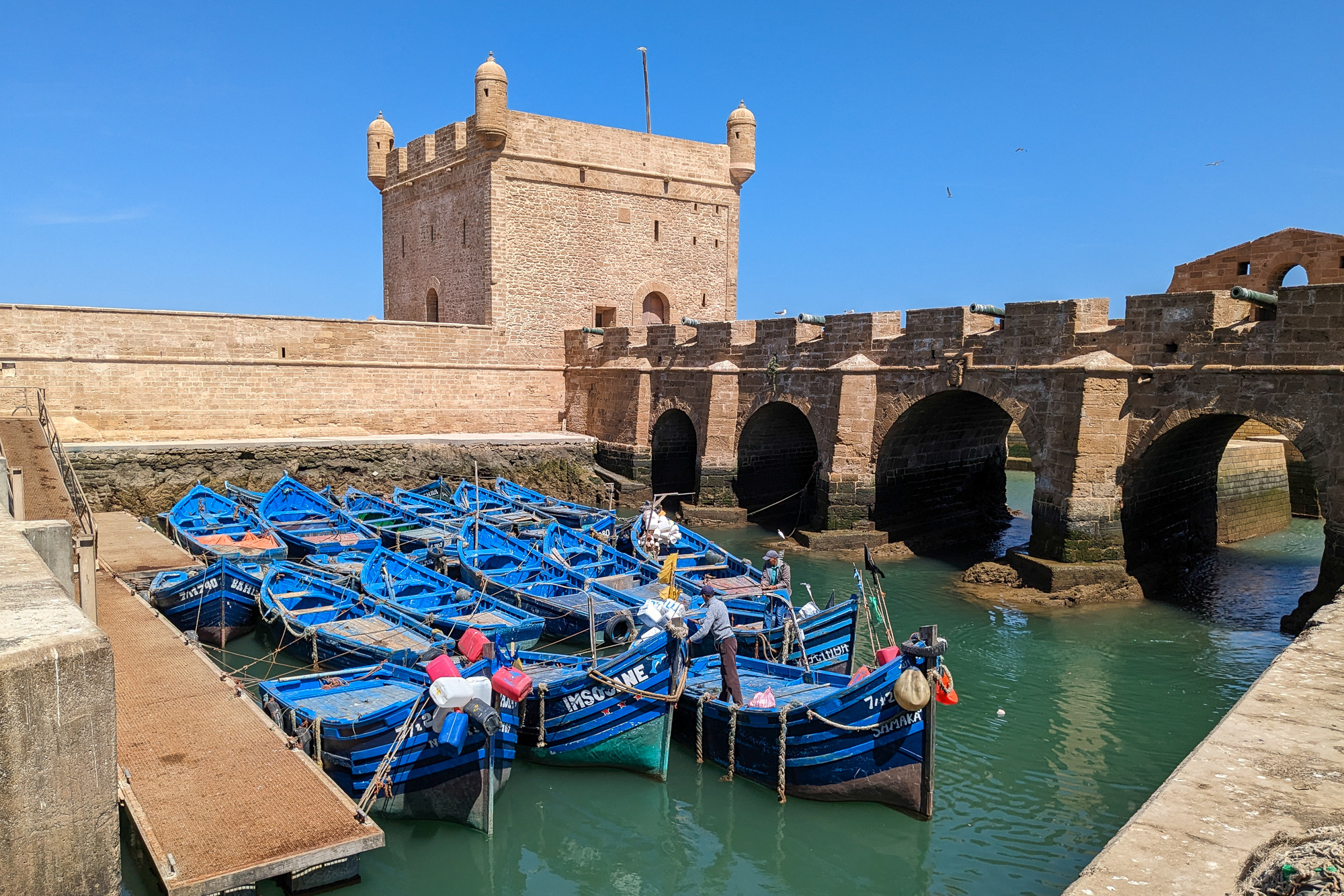

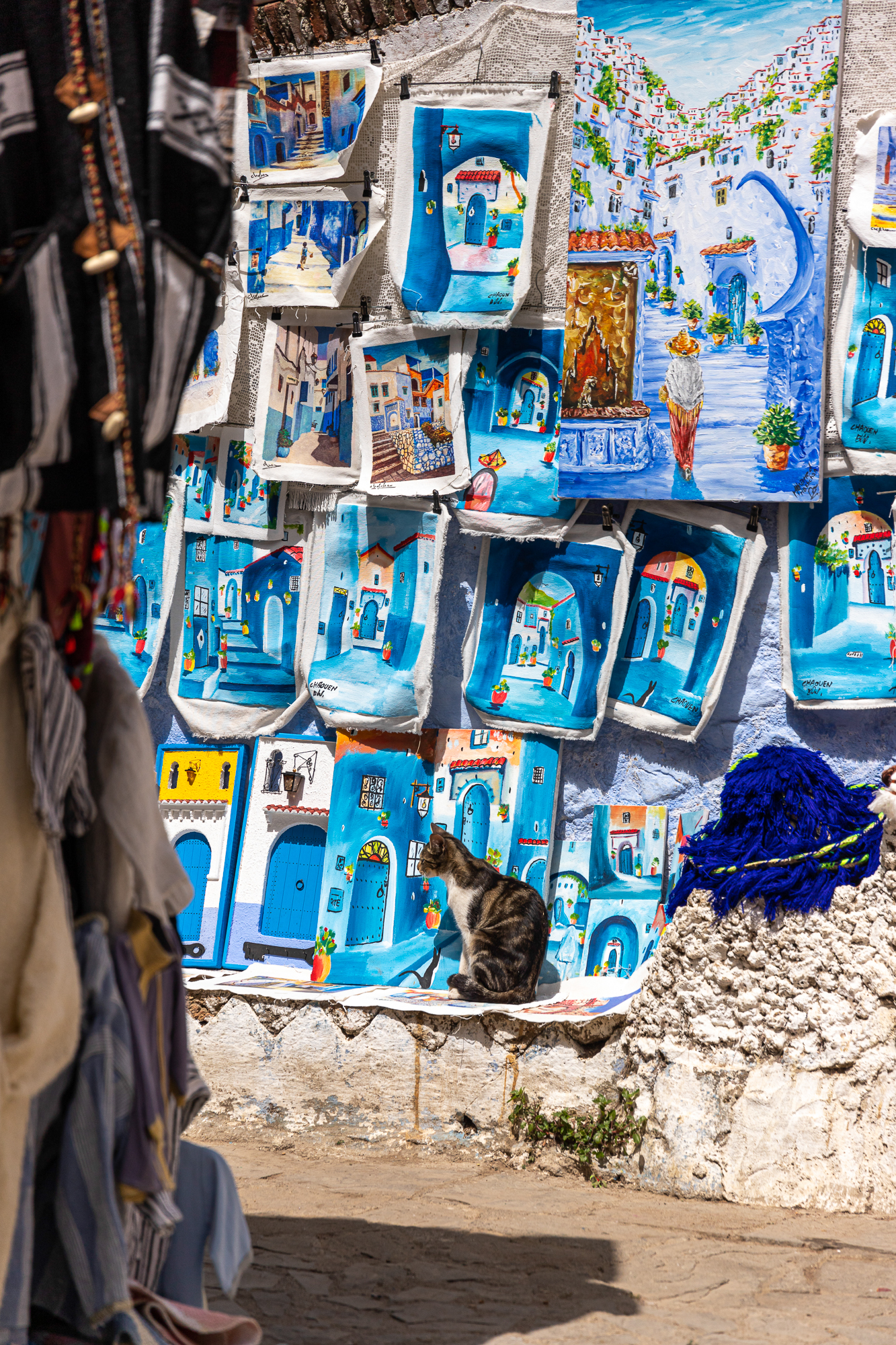
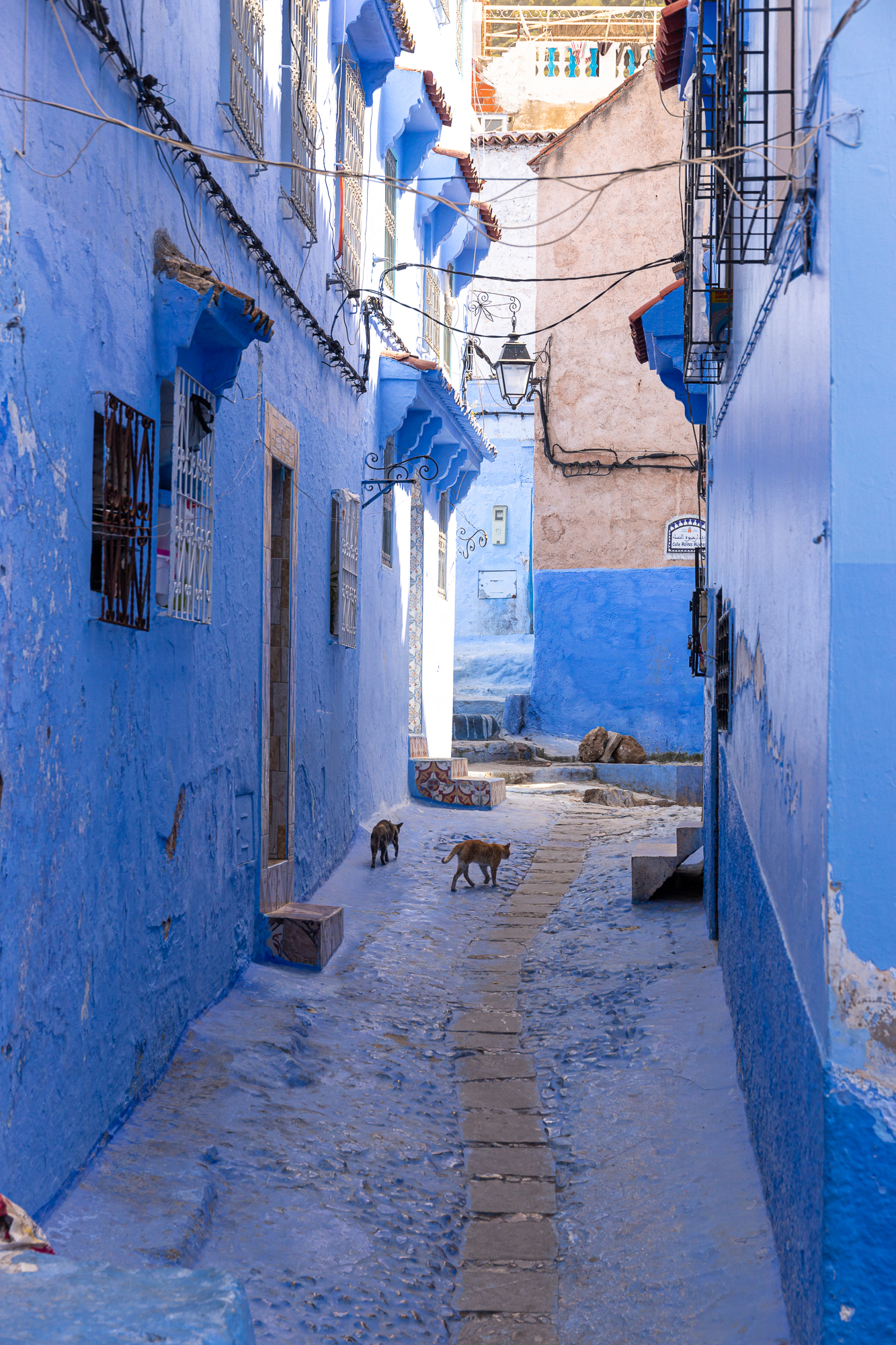
After three weeks, the family boarded a boat bound for France. Work, home life, and school beckoned from across the sea. Musslin returned to the garage, busy with one of his latest projects, a four-wheel-drive 2CV. A year or so later, I spotted a pale chartreuse saloon car on Instagram, looking timelessly romantic in 21st-century Morocco. Even now, Etienne’s vehicle choice continues to shape who he speaks with, who he reaches, and who he inspires. Whether you drive a Jeep, G-Wagon, or Subaru, I’m sure the same is true for you.
“People often ask me why my car is like this and not all shiny as most of these cars are,” Etienne admits. “I say, yeah, but if it were, it would be parked in the garage or museum, and I wouldn’t dare take it shopping. Only the car you are driving and using makes memories.”
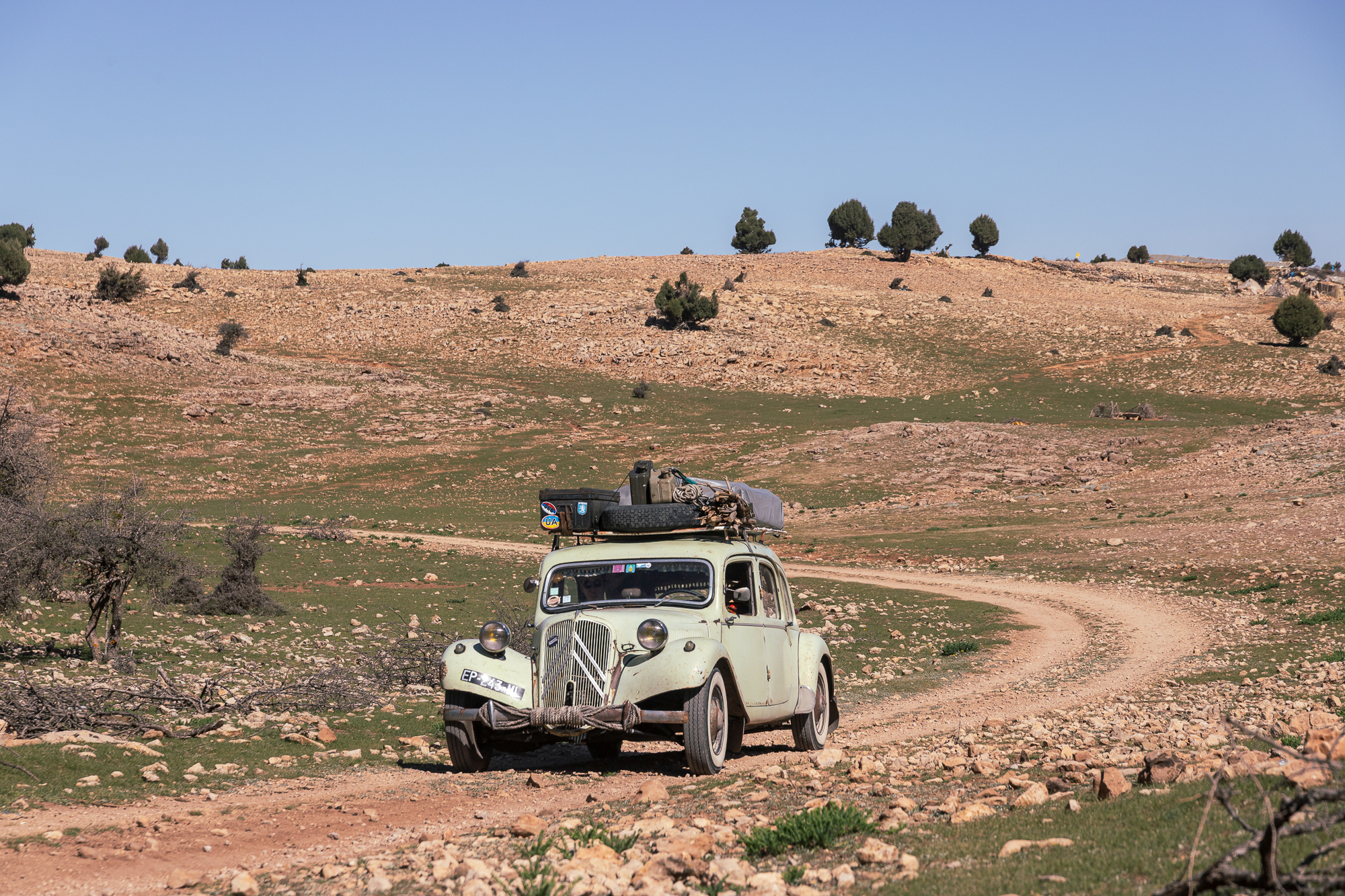
Specifications
1955 Citroën Traction Avant 11CV Commerciale
Power
1911cc 4-cylinder engine
3-speed gearbox
Suspension and Drive
Stock
Wheels and Tires
Coker Classic 6.00R16 tires (currently running Michelin X 185R400 tires)
Modifications
Electronic ignition
12-volt conversion with alternator
Reinforced front axle
Rear tow hook
K&N air filter
Accessories
Custom roof rack
Second-hand James Baroud rooftop tent
Awning
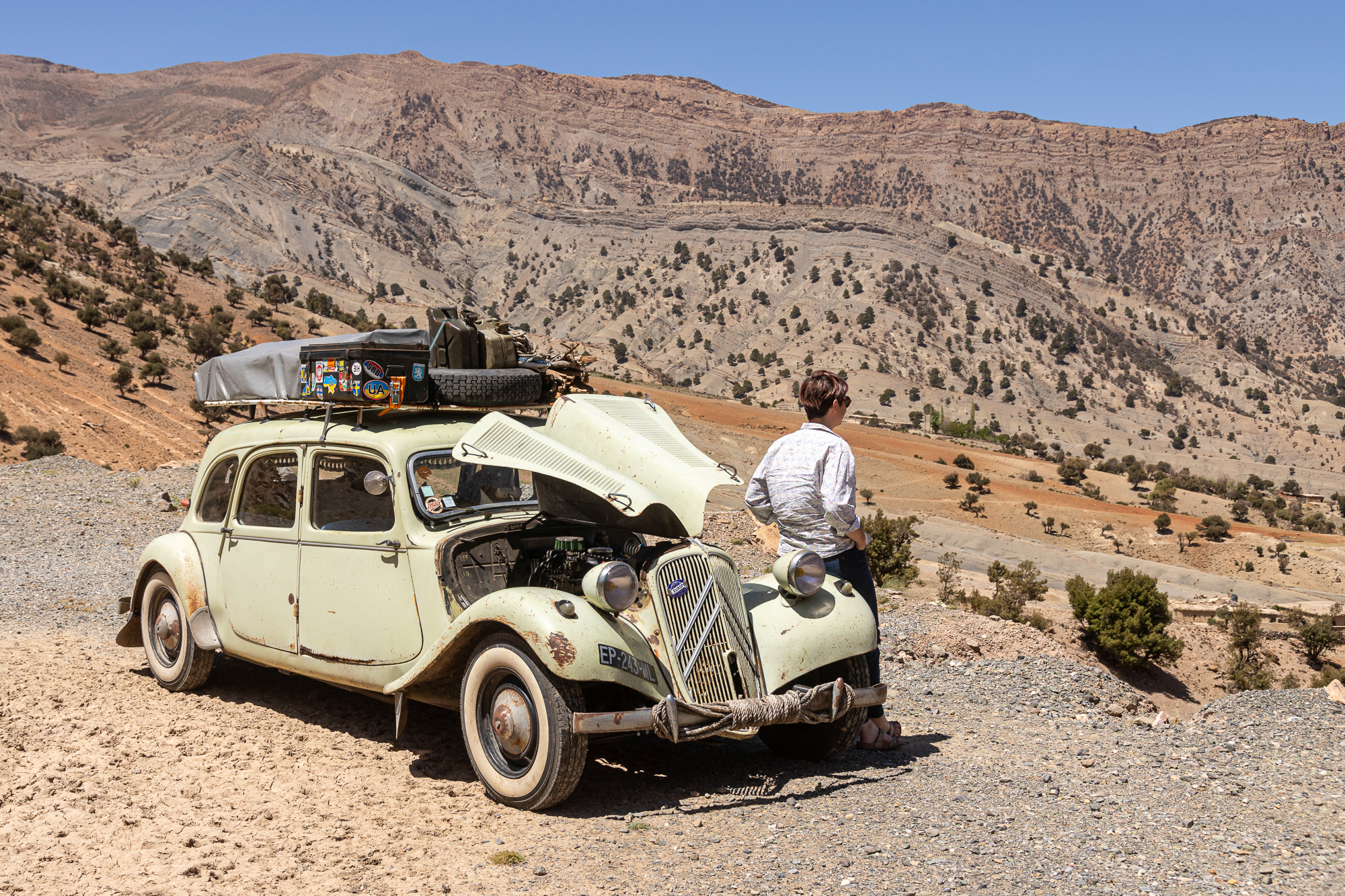
Read more: Testing the Ducati DesertX Rally in Morocco
Editor’s Note: This article was originally published in Overland Journal’s Spring 2024 Issue.
Our No Compromise Clause: We do not accept advertorial content or allow advertising to influence our coverage, and our contributors are guaranteed editorial independence. Overland International may earn a small commission from affiliate links included in this article. We appreciate your support.


